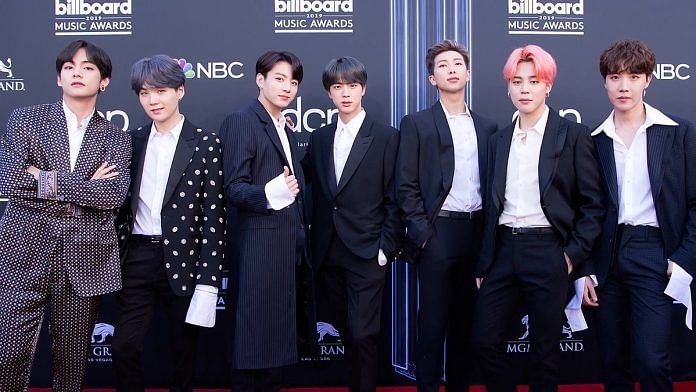Korean is currently the fastest-growing foreign language in India—a popular language-learning app called DuoLingo concluded after surveying more than 1,000 Indians. Given the surge in popularity of Korean dramas and K-pop music in the country, especially since the Covid-19 pandemic, the growing interest in the language isn’t unexpected.
I took up learning Korean in 2017, having voraciously consumed Korean popular culture for more than a decade. What spurred me on was a failed attempt at learning it on my own and later from a Korean neighbour. Therefore, I enrolled at the South Korean government-run language centre in New Delhi—the King Sejong Institute. Although I had been watching K-dramas and movies since 2008, it was the enlivening effect of K-pop that eventually pushed me to learn the language.
You go in for pop culture, but stay for the language
On my first day, our teacher said, “An intelligent person can learn Korean in a day and a dumb person within a week.” Learning the Korean alphabet system is indeed easy—the initial learning curve is very steep. That’s because Korean is a language that was meant for the commoners. Any learner of Korean would be familiar with its history—King Sejong the Great instructed the creation of a writing system that was easy to learn. Until 1443, Chinese had been the primary medium of writing in Korea and was known only to the affluent classes.
The lessons gradually get tougher with Korean homophones, and the grammar tests every learner’s resolve. But, beyond the euphoria of understanding what your favourite K-pop celebrity spoke, the language becomes a gateway to understanding a completely new culture. Somewhere along the way, the pop culture aspect that encouraged me to learn Korean took a backseat. Now, it’s the beauty of unraveling meanings, decoding the cultural context of a new vocabulary, and getting Korean puns that pique my interest. Language—as a medium of expression—is one of the most intrinsic aspects of any culture. As the Korean wave deepens its hold over India, the growing trend to learn the language is a natural outcome.
Who are the learners?
As I returned to active studying long after leaving college, I realised that regular classrooms had transformed into smart classrooms, and people came in from all walks of life. A few came to learn Korean for work and business, but it was mostly the country’s popular culture that drew in most of the learners. To strike a conversation with them was effortless, as they all shared the same passion.
During the breaks between classes, teachers sometimes played classic K-pop hits such as Taeyang’s ‘Eyes, Nose, Lips,’ or their favourite Korean ballads. Once, a teacher explained the etymology of the two K-pop groups—2PM and 2AM. Students discussed the latest updates of K-pop groups and K-dramas like serious news. The classes were fun but rigorous. At times, traces of the unyielding Korean education system seeped in, especially during exams. Nonetheless, the classroom was a utopia for Korean enthusiasts where reality could be forgotten for a while.
Be it schoolgoers or people in their 50s, new students during orientation sessions would unfailingly mention the desire to enjoy Korean content without subtitles as the main motivating factor. In a podcast, a former student-turned-teacher at the institute mentioned that erasing the barrier of subtitles remains the driving force among her students. She also noted that many take up the language with the goal of studying in South Korea. Furthermore, the language has managed to capture the interest of polyglots in India, she noticed. With Korean, Japanese, and Chinese sharing linguistic similarities, the crossover of interests among the enthusiasts of these languages is fairly common. I recall having classmates who were learning Japanese and Korean simultaneously because of their interests in manga and K-pop.
Also read: Instagram Reels are the new Billboards. And Badshah’s Jugnu has got people ‘hooked’
The boom in popularity of East Asian languages
King Sejong Institute opened in India in January 2013, starting off with 50 students in New Delhi. Over the years, the surge in applicants grew exponentially—today the centre conducts entrance tests and has expanded to Patna and Imphal. As classes went online due to the pandemic and the Korean Cultural Centre India started free online classes, 600 seats were filled the moment registrations opened. People rushed to grab seats as if they were buying K-pop concert tickets for cheap.
Simultaneously, there was a boom in private platforms offering classes online. My Instagram ads are countless platforms offering to teach Korean. The physical barrier to learning the language has disappeared.
Ensuring easy accessibility seems to be the mantra for South Koreans. The digital revolution brought in a Korean wave that made its pop-culture content visible worldwide, and now, it is in play for its language with soaring popularity.
This swelling interest in the Korean language is a trend that isn’t unique to India. As per DuoLingo’s report, Korean is the fastest-growing foreign language in other countries as well—Brazil, France, Germany, and Mexico. The UK is witnessing a rise in Japanese learners as interest in the eastern country’s popular culture grows. And if my K-pop Twitter feed is any indication of the evolving trend, the next big thing is likely to be Chinese dramas.
“Once you overcome the one-inch-tall barrier of subtitles, you will be introduced to so many more amazing films,” South Korean director Bong Joon-ho made this statement in his speech after Parasite won the best movie award at the Oscars in 2020.
In hindsight, Bong’s statement in Los Angeles seems to have resonated among the Indian audience. K-drama and K-pop lovers didn’t stay limited to enjoying content with subtitles. They have gone a step further and are attempting to bridge the gap by learning the language.
Views are personal.
(Edited by Humra Laeeq)



